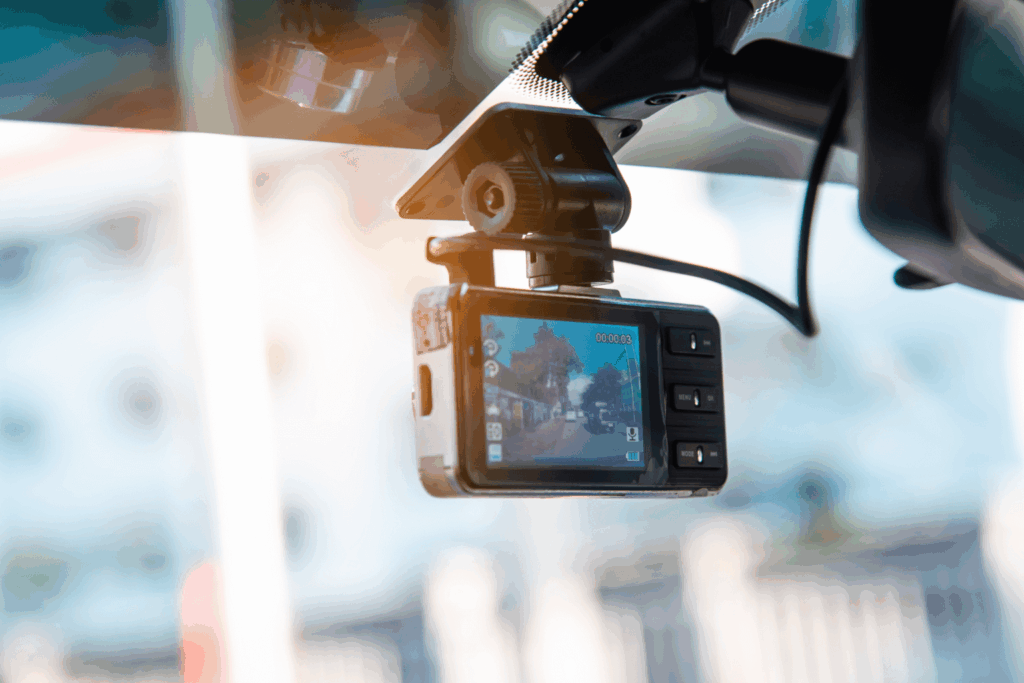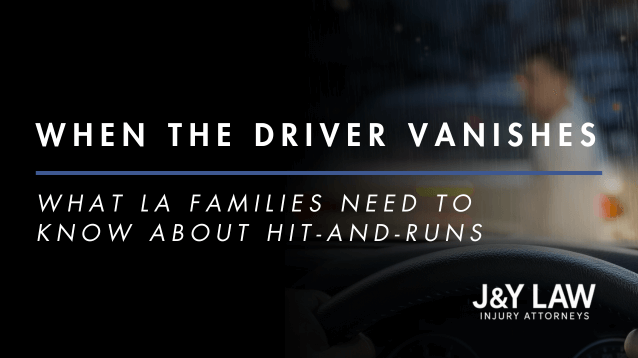When the Driver Vanishes: What LA Families Need to Know About Hit-and-Runs
Los Angeles roads are no stranger to chaos. When a driver disappears, families are left not just shaken, but uncertain. The aftermath of a hit-and-run can be physically, financially, and emotionally devastating.
Last month alone, Southern California saw:
- A fatal hit-and-run in South LA, where LAPD offered a $50,000 reward.
- A woman killed outside a Gardena bar, with the driver still unknown.
- A Reseda case where surveillance footage was released to help identify a suspect.
Each case is unique, but the legal questions that arise share common ground: Can victims recover? What evidence matters? Can someone be held liable, even if the driver is never caught?
In this blog, we break down what families need to know, including your rights under California law, applicable legal statutes, and the urgent actions you must take to protect your future.
Understanding Hit-and-Run Accidents in California
Under California Vehicle Code § 20001 (for injury or death) and § 20002 (for property damage only), a hit-and-run occurs when a driver involved in a crash fails to stop, provide their information, or render aid.
Even if the at-fault driver vanishes, victims may still pursue compensation through insurance or alternative liability routes.
“We’ve handled countless hit-and-run cases where families felt hopeless at first,” says Parham Nikfarjam, Senior Trial Attorney at J&Y Law. “Luckily, California law gives you more power than you think. If someone fled the scene, that’s not the end of the road. We know how to find paths forward even when the driver disappears.”
For a free legal consultation, call (424) 453-2310
Insurance Options: Uninsured/Underinsured Motorist (UM/UIM) Coverage
If the driver cannot be identified or is uninsured, Uninsured Motorist (UM) coverage can step in. If the driver is identified but lacks sufficient coverage, Underinsured Motorist (UIM) provisions may apply.
- Statute: California Insurance Code § 11580.2 requires that all auto insurers offer UM/UIM coverage.
- Many California policies include it by default, even if you don’t remember selecting it.
This coverage can apply in fatal or serious hit-and-run incidents. For example, following a fatal South LA crash on September 5th, the victim’s family may be eligible to recover compensation through their UM policy, even as police continue their investigation
How Rewards and Surveillance Video Help Families
- Public Rewards: Programs like the City of Los Angeles Hit-and-Run Reward Program (L.A. Admin. Code § 19.123) authorize rewards of up to $50,000 to encourage witnesses to come forward.
- Surveillance Video: Police often release footage to aid in public identification. In Reseda on September 4th, LAPD released surveillance video as part of a renewed call for tips.
Families can also take proactive steps by canvassing doorbell cameras, businesses, and HOA security systems within 48–72 hours of the crash, and working with attorneys to send preservation letters before footage is erased.

Click to contact our personal injury lawyers today
Why Time Is Critical: Preserving Evidence After a Crash
- Crash Data (EDRs): Vehicles often store crash data on an Event Data Recorder. If the vehicle is repaired or destroyed, this evidence may be lost permanently.
- Security Footage: Most systems overwrite data every 7–14 days, sometimes sooner.
- Medical Documentation: Early collection of emergency room records, treatment plans, and funeral costs (in wrongful death cases) helps establish a clear damages claim.
Your legal team can immediately send out spoliation letters under the Doctrine of Evidence Preservation to prevent deletion
Complete a Free Case Evaluation form now
Can You Sue if the Driver Is Never Caught?
Yes. Victims can file a first-party claim under their UM/UIM coverage. In some cases, other entities – such as bars that overserved alcohol to minors – may be held liable under California Civil Code § 1714, though California’s dram shop laws are limited.
How Long Do I Have to File a Claim?
- Standard personal injury claim: 2 years from the date of injury (California Code of Civil Procedure § 335.1).
- Wrongful death claim: 2 years from the date of death.
- Claims against public entities: Must be filed within 6 months of the incident (Gov. Code § 911.2).
What Should I Do Right After a Hit-and-Run?
- Call 911 and request a police report.
- Get medical attention, even for minor symptoms.
- Take photos and video of the scene, debris, and injuries.
- Ask nearby businesses or homes about security footage.
- Contact your insurance to begin a UM/UIM claim.
- Reach out to an attorney experienced in hit-and-run cases.
Choosing the Right Legal Team for a Hit-and-Run Case
Not all personal injury attorneys have experience with unidentified driver cases. You need a team that knows how to:
- Track down and preserve video evidence
- File UM/UIM claims with comprehensive documentation
- Navigate complex liability issues
- Maximize recovery through all available channels
At J&Y Law, we’ve represented families across California who’ve been affected by drivers who fled the scene. We know how to uncover evidence others miss, and we fight for the compensation you deserve, no matter how difficult the path forward may seem.
Just because the driver vanished doesn’t mean your case has to. The law offers multiple avenues for victims to recover, but acting fast is essential. Preserve the evidence, protect your rights, and partner with a team that knows how to win.
Call or text (424) 453-2310 or complete a Free Case Evaluation form


